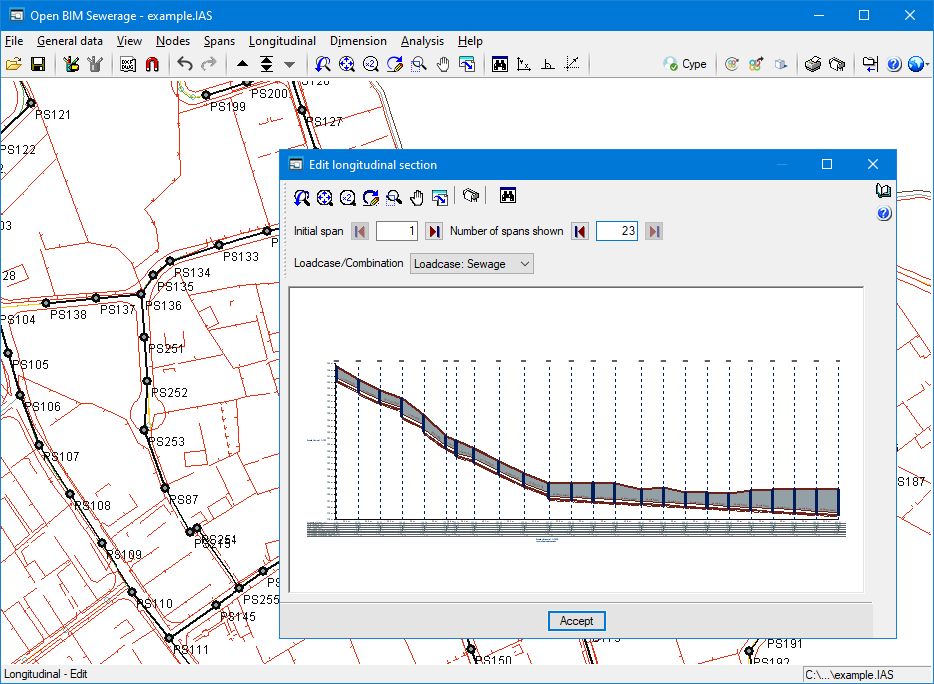Program features
Sewerage networks are gravity-fed systems.
The discharge point or sewage dump may be a sump pump, emitters or an existing sewerage network. The minimum depth of the pipe may be limited.
Different formulas can be used when designing sewer ducts: Manning-Strickler, Prandtl-Colebrook, Tadini, Bazin, Sonier, Kutter or Ganguillet-Kutter.
Editing longitudinal sections. An interactive view of the longitudinal section with the possibility of modifying the elevation of the node, slopes of the spans, etc.
Calculation limit by depth. Rainwater supply using the rational method. Automatic loadcases for sewage and rainwater. Infiltration factor for drainage design.
Automatic calculation of section depths. It uses the rainflow counting algorithm from the supply (manholes) to the sewage dump. The geometry of the ducts is highly variable.
In order to define trenches, the slope, lateral distance, minimum width, bed and infill shall be entered. To calculate the excavation, the ground level elevation and soil elevation, duct depth and manhole depth are specified.
Reads digital terrain models in IFC4 format if the job is connected to a BIM model hosted in BIMserver.center containing the IFC4 file with the terrain data defined in an entity such as "IfcGeographicElement".
Project documents
As well as the results that can be consulted onscreen (longitudinal section - with results by loadcases, combinations or building envelopes - node calculation data and section calculation data), the program generates the following project documents (reports and drawings). These documents can be printed from the program, exported in various formats and exported to the BIM model hosted on the BIMserver.center platform if the job has been connected to a BIM model.
Reports
- Design report
Description of the sewerage network, the materials used and the terrain, formulation, combinations, list of nodes, list of sections, list of elements, building envelope and measurement (ducts, excavation and backfilling). - Node results
Numbering of nodes, coordinates, elevation, depth, flow supply and simultaneous flow supply. - Span results
Length, diameter, slope, flow supply, simultaneous flow supply, infiltration, flow, depth and velocity.
Drawings
- Installation drawings
- Quantities tables
- Excavations tables
- Analysis results information by loadcases, combinations or building envelopes of:
- Nodes: flow, depth, ground level elevation and soil elevation
- Spans: dimension, material, flow, depth and velocity
- Quantities tables
- Longitudinal sections
With calculation results information by loadcases, combinations or building envelopes of:- Lines of: ground level, modified soil, ducts and bottom of excavation
- Pits
- Spans with: dimension, material, flow, depth and velocity
- View with: manhole references, ground level elevation and soil elevation and depths (manholes, duct entries, duct exits, entry-type excavations and exit-type excavations)
Urban infrastructure marketing
Urban Infrastructure programs are marketed in two ways:
- Urban infrastructures
- Urban infrastructures LT
Includes the same tools and features as the full version, but the maximum number of nodes that can be entered is limited to 50.




